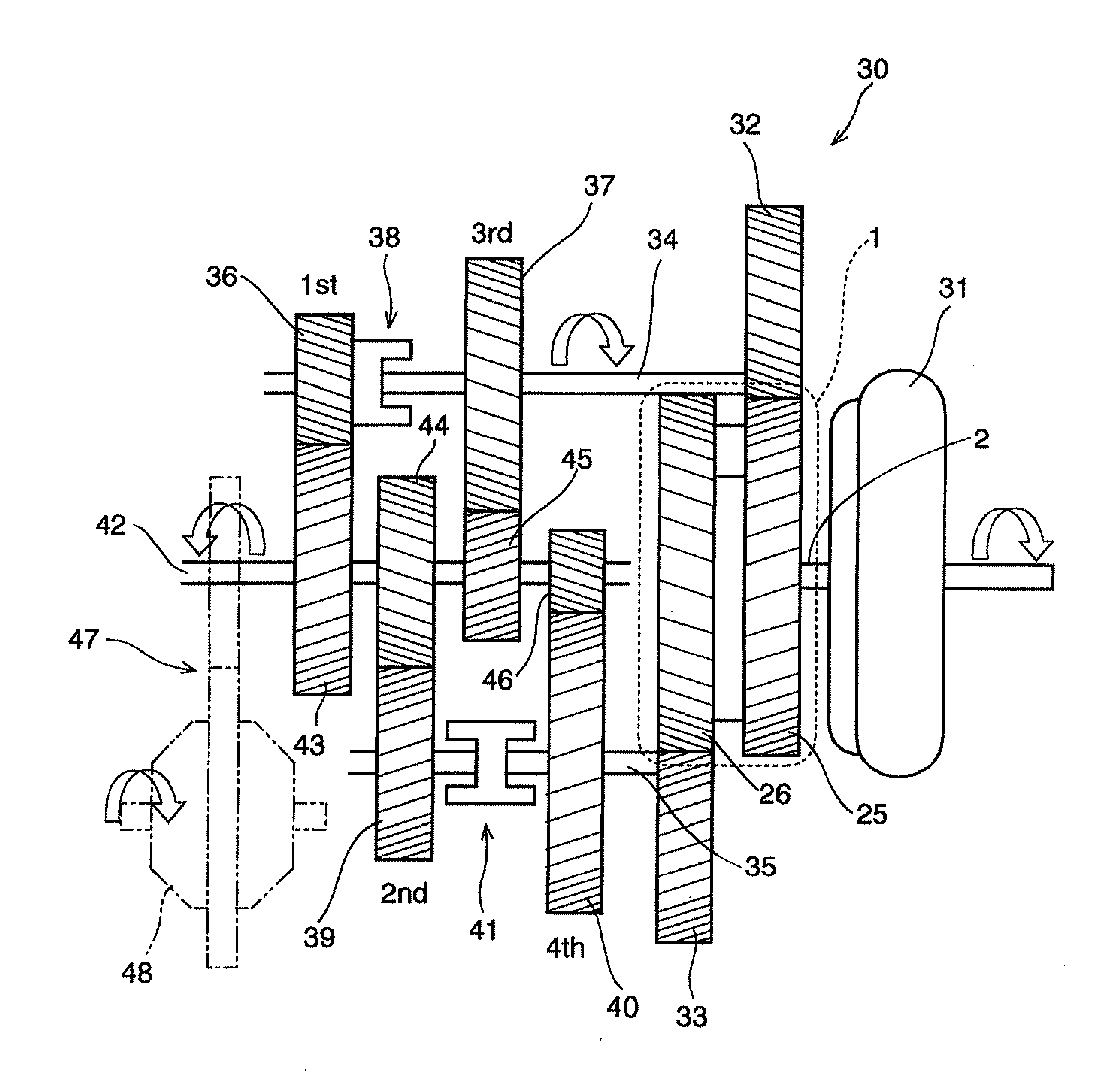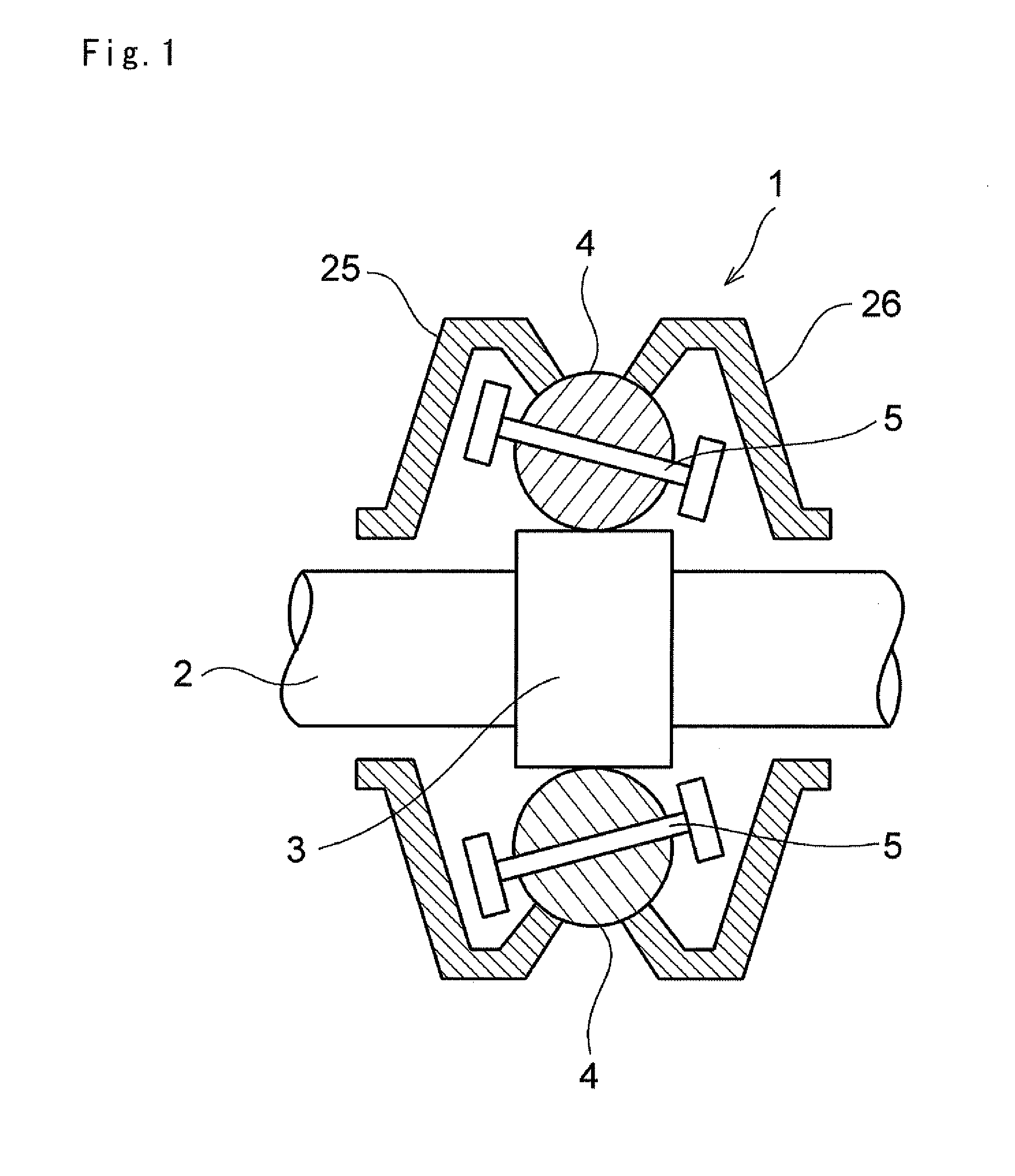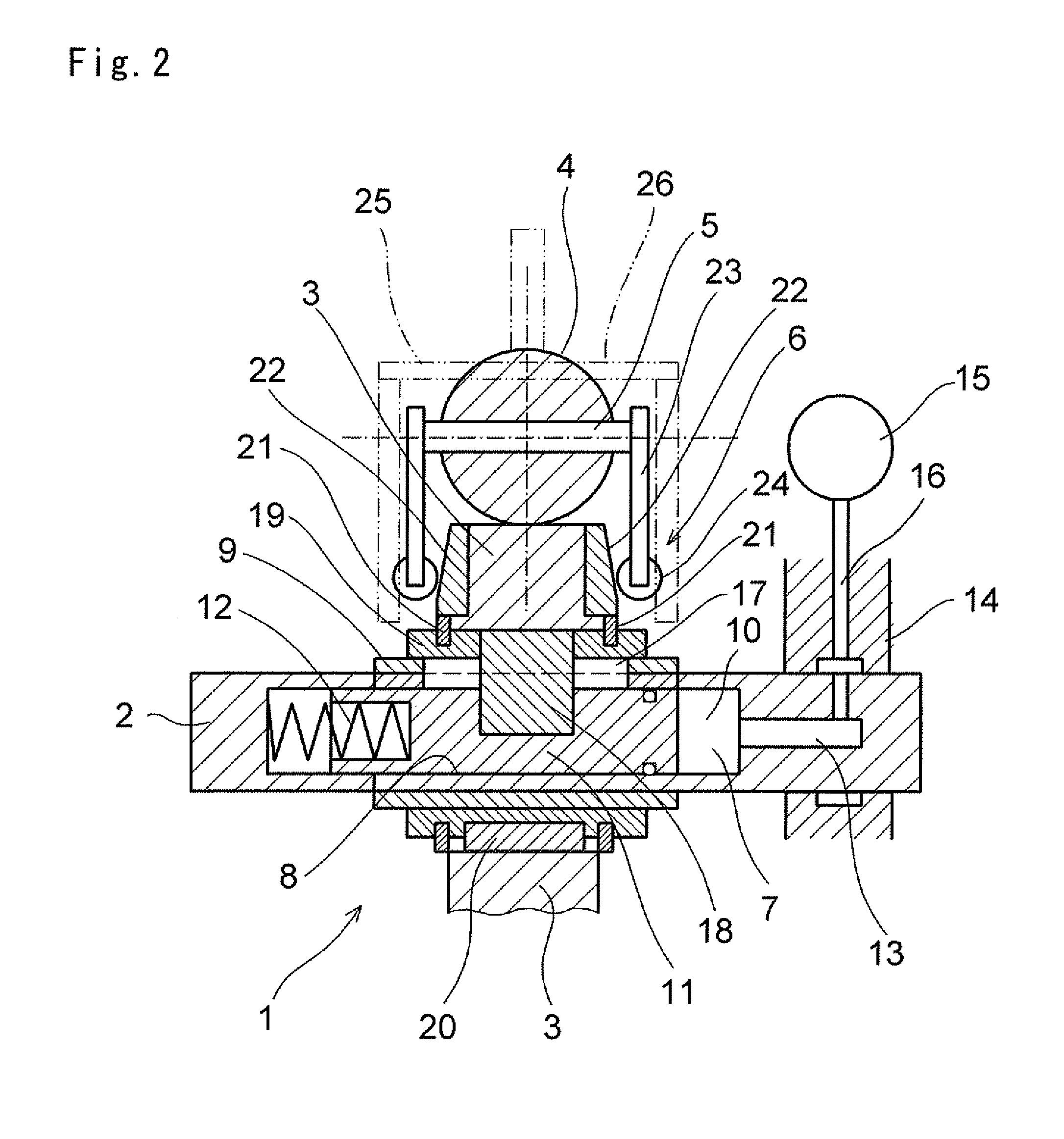Continuously variable transmission mechanism and transmission using the same
a transmission mechanism and variable technology, applied in the direction of friction gearings, belts/chains/gearings, friction gearings, etc., can solve the problems of complicated control, mechanism expansion, complicated control, etc., and achieve the effect of reducing the rotational speed of one, increasing and reducing the rotational speed of the other rotary member
- Summary
- Abstract
- Description
- Claims
- Application Information
AI Technical Summary
Benefits of technology
Problems solved by technology
Method used
Image
Examples
Embodiment Construction
[0030]Next, this invention will be described in connection with its specific examples. As shown in FIG. 1, a continuously variable transmission mechanism 1 is configured to transmit a torque among three rotary elements, and to continuously vary a speed change ratio between a first rotary element and a second rotary element and a speed change ratio between the first rotary element and a third rotary element. In FIG. 1, reference numeral 2 represents an input shaft, and a roller 3 is fitted onto the input shaft 2 to be rotated integrally with the input shaft 2. Specifically, the roller 3 is a cylindrical member, and an outer circumferential face thereof serves as a torque transmission face. In addition, a plurality of rolling members 4 are arranged around the torque transmission face while being contacted therewith.
[0031]As explained later, the rolling member 4 is adapted to mediate a torque transmission, and to vary a speed change ratio. For this purpose, an outer circumferential fac...
PUM
 Login to View More
Login to View More Abstract
Description
Claims
Application Information
 Login to View More
Login to View More - R&D
- Intellectual Property
- Life Sciences
- Materials
- Tech Scout
- Unparalleled Data Quality
- Higher Quality Content
- 60% Fewer Hallucinations
Browse by: Latest US Patents, China's latest patents, Technical Efficacy Thesaurus, Application Domain, Technology Topic, Popular Technical Reports.
© 2025 PatSnap. All rights reserved.Legal|Privacy policy|Modern Slavery Act Transparency Statement|Sitemap|About US| Contact US: help@patsnap.com



